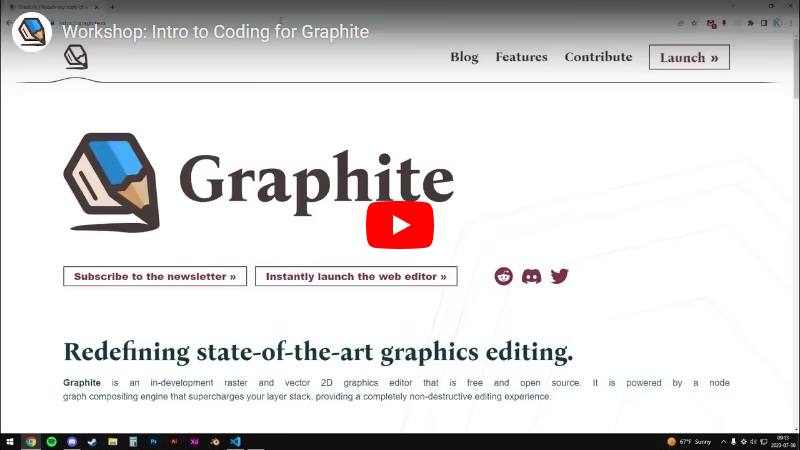The best introduction for getting up-to-speed with Graphite contribution comes from watching this webcast recording. Before asking questions in Discord, please watch the full video because it gives a comprehensive overview of most things you will need to know.
Codebase structure
Graphite is built from several main software components. New developers may choose to specialize in one or more area without having to attain a working knowledge of the full codebase.
Frontend
Location: /frontend/src
The frontend is the GUI for Graphite which users see and interact with. It is built using web technologies with TypeScript and Svelte (HTML and SCSS). The frontend's philosophy is to be as lightweight and minimal as possible. It acts as the entry point for user input and then quickly hands off its work to the WebAssembly editor backend via its Wasm wrapper API. That API is written in Rust but has TypeScript bindings generated by the wasm-bindgen tooling that is part of the Vite-based build toolchain. The frontend is built of many components that recursively form the window, panels, and widgets that make up the user interface.
Editor
Location: /editor
The editor is the core of the Graphite application, and it's where all the business logic occurs for the tooling and user interaction. It is written in Rust and compiled to WebAssembly. At its heart is the message system. It is responsible for communicating with Graphene as well as handling the actual logic, state, tooling, and responsibilities of the interactive application.
Graphene
Location: /node-graph
Graphene is the node graph engine which manages and renders the documents. It is itself a programming language, where Graphene programs are compiled while being edited live by the user, and where executing the program renders the document.
Frontend/backend communication
Frontend-to-backend communication is achieved through a thin Rust translation layer in /frontend/wasm/src/editor_api.rs which wraps the editor backend's Rust-based message system API and provides the TypeScript-compatible API of callable functions. These wrapper functions are compiled by wasm-bindgen into autogenerated TS functions that serve as an entry point from TS into the Wasm binary.
Backend-to-frontend communication happens by sending a queue of messages to the frontend message dispatcher. After the TS has called any wrapper API function to get into backend code execution, the editor's business logic runs and queues up each FrontendMessage which get mapped from Rust to JavaScript data structures in /frontend/src/messages.ts. Various TS code subscribes to these messages by calling:
subscribeJsMessage;
